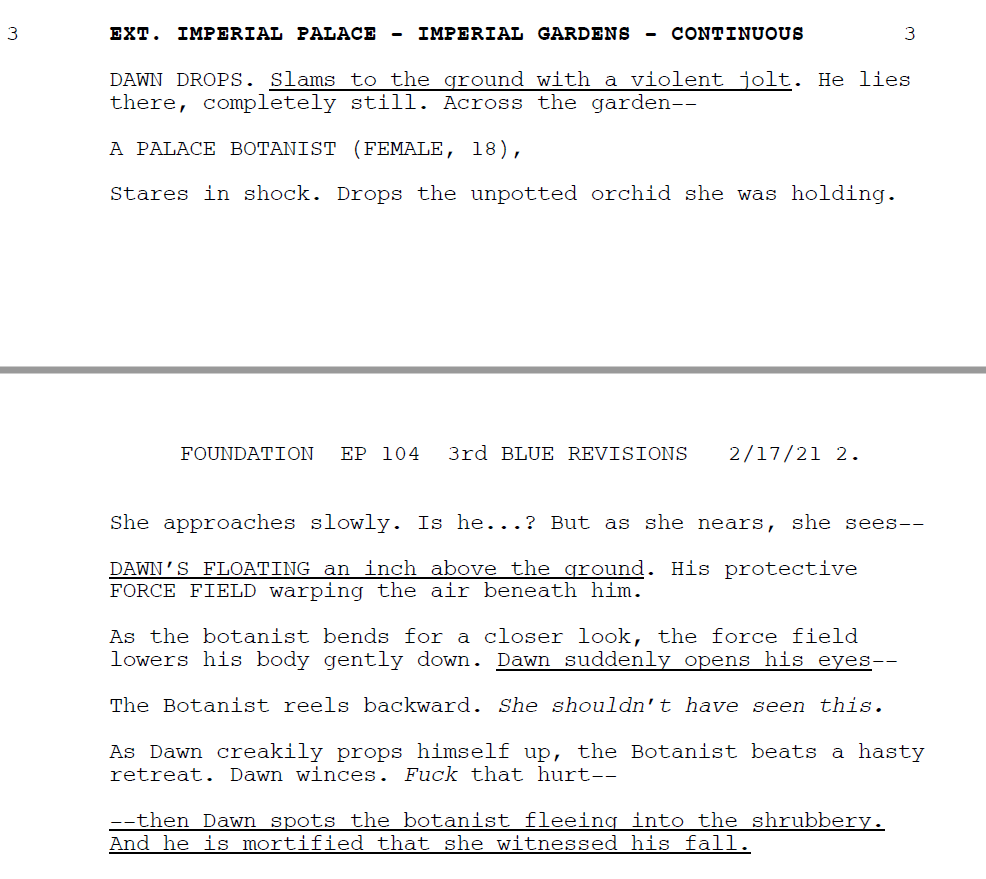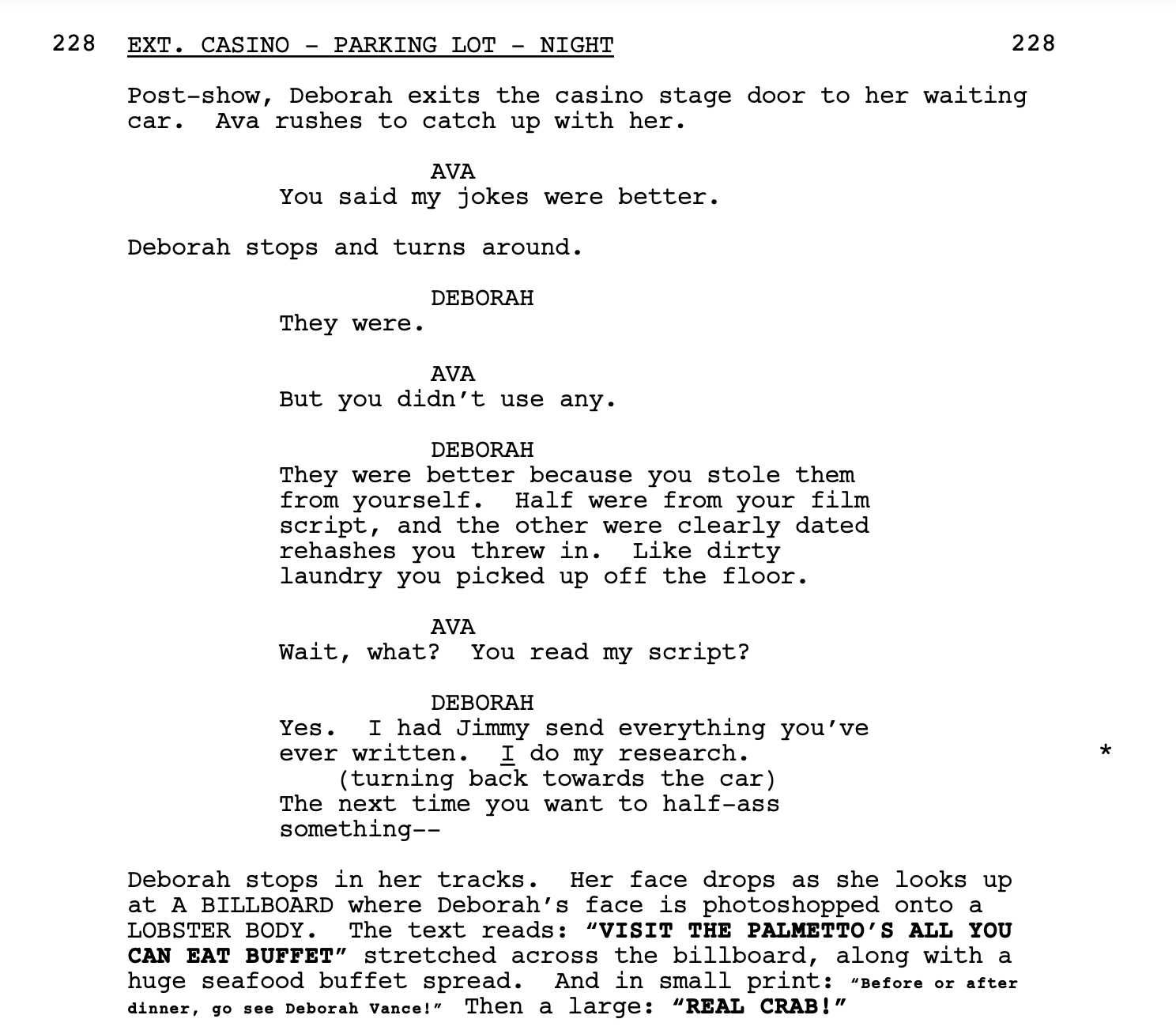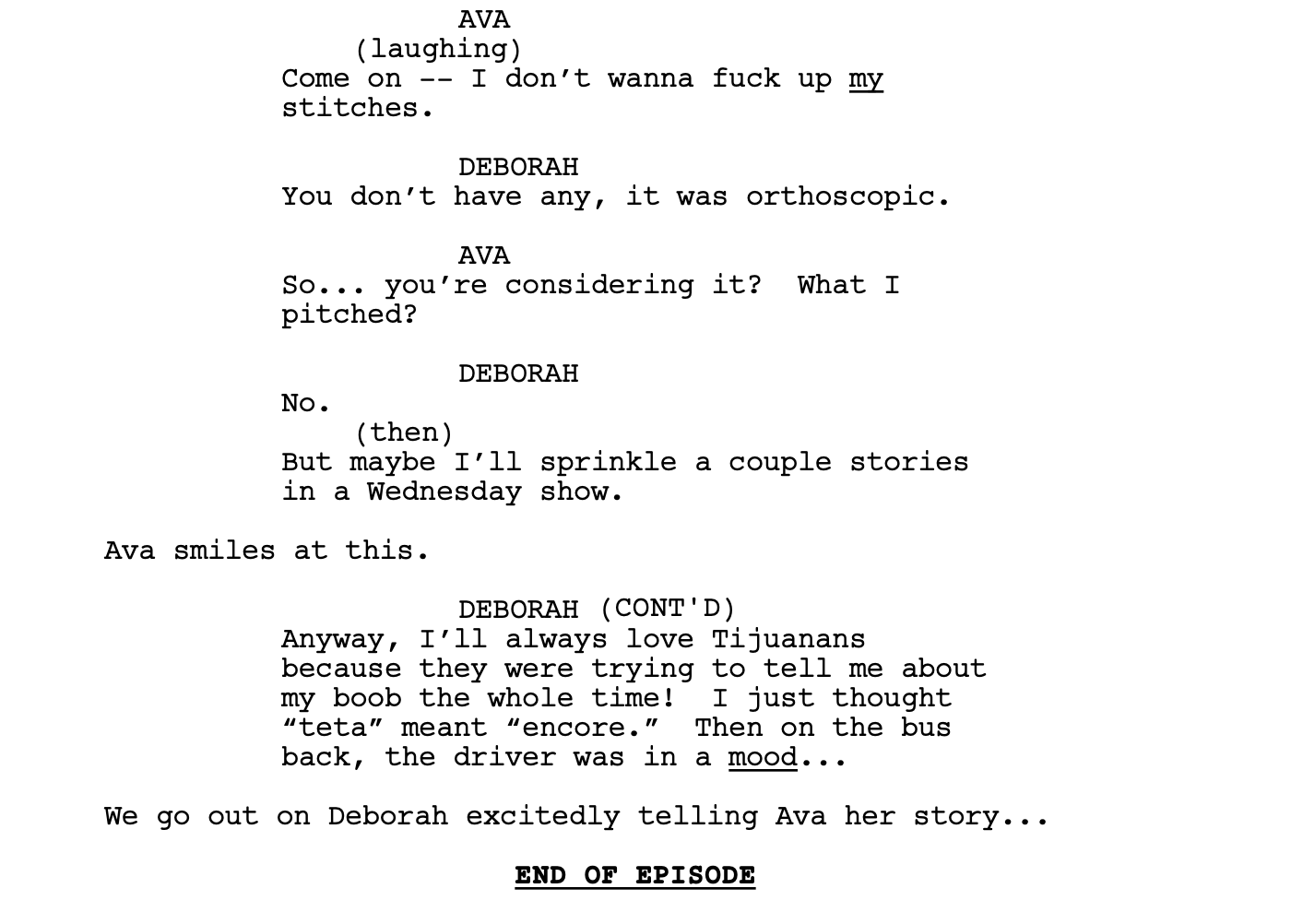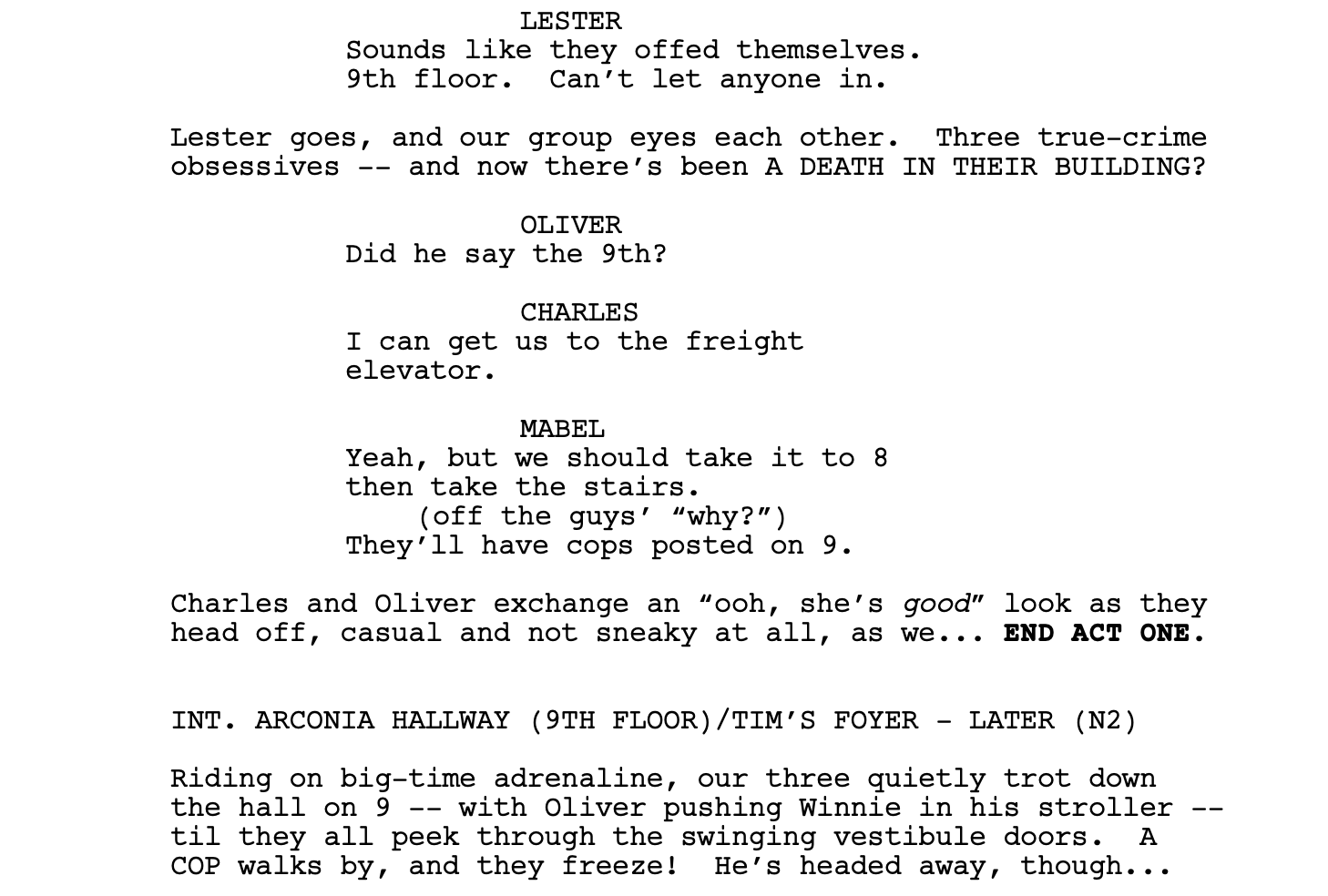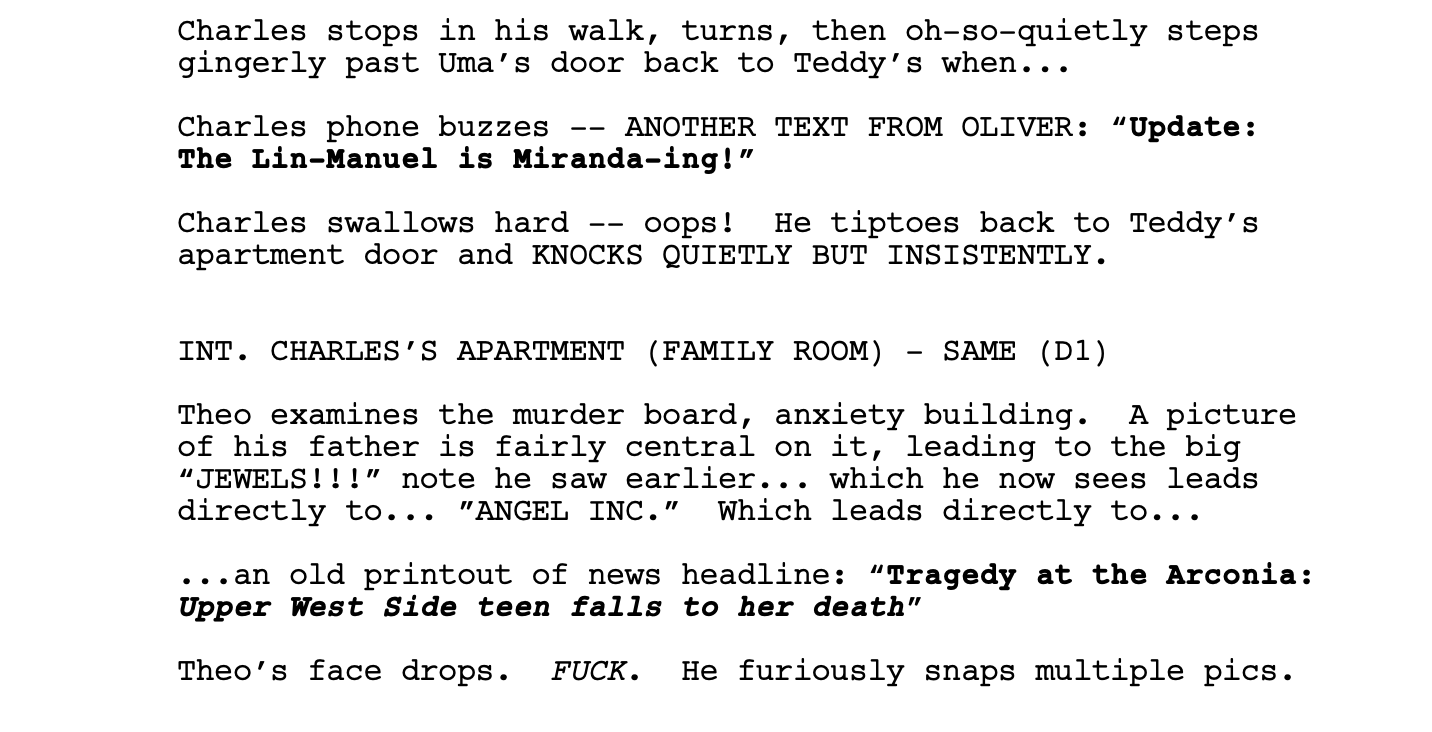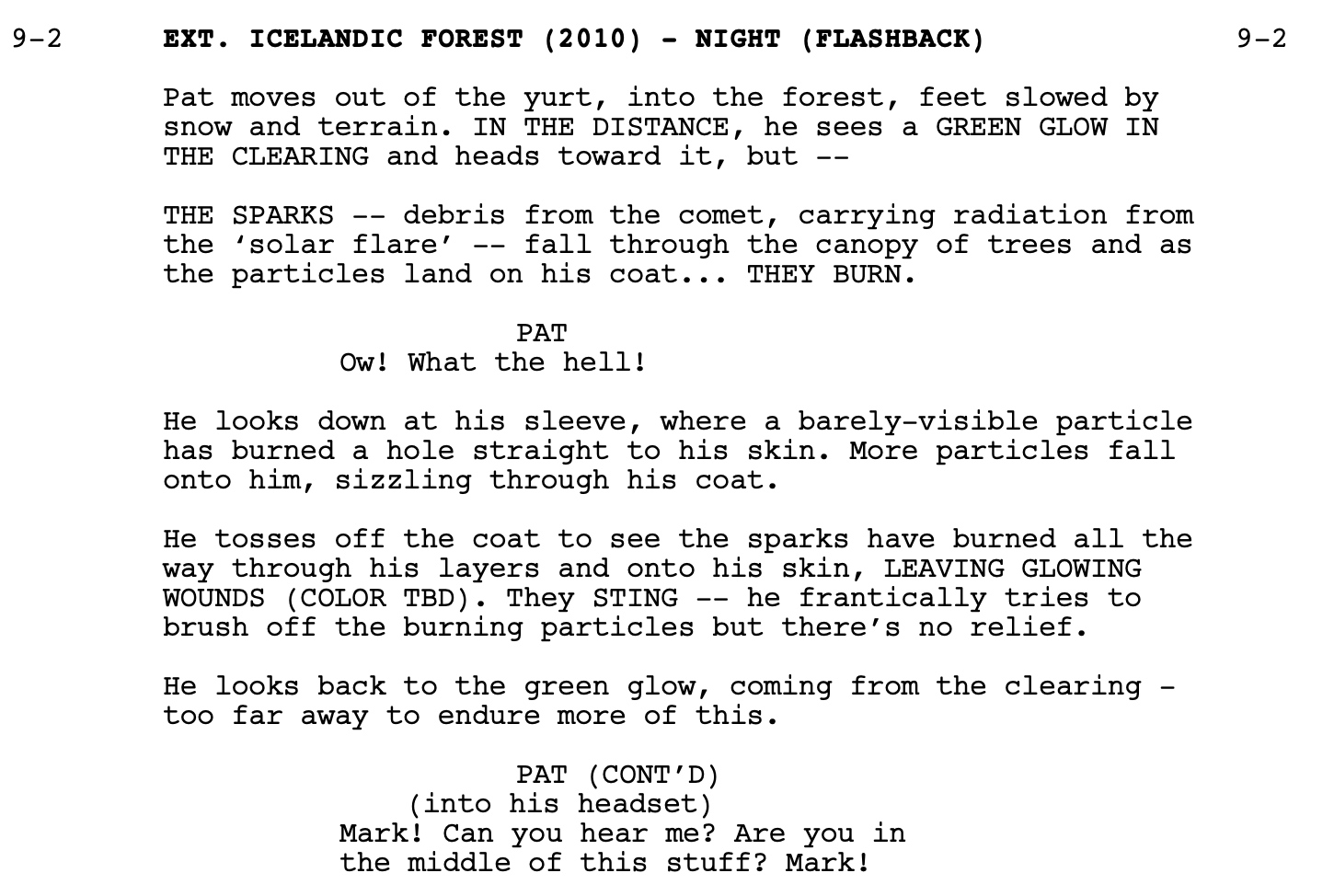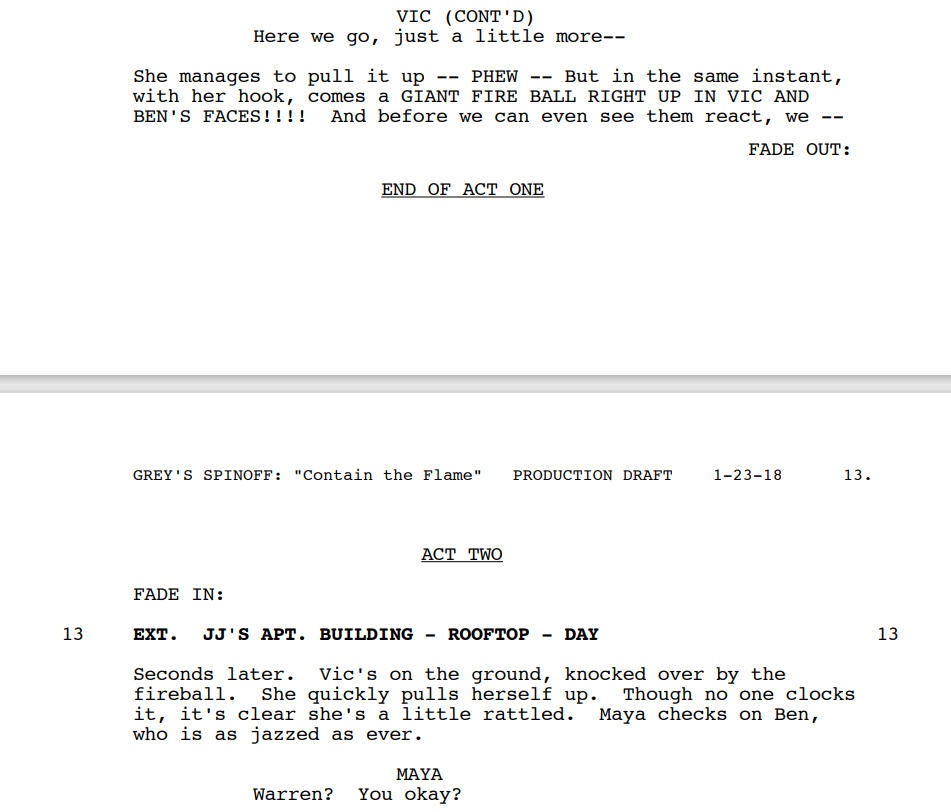FORMATTING YOUR SPEC SCRIPT WHILE SOCIAL DISTANCING: A PRIMER, PART 18
Seriously, where does the time go? How we wish we could welcome you back into the library to browse scripts and get focused work done, but we’ll have to wait just a bit longer. With Fellowship Season ‘22 upon us, here is another post in what has become a mainstay series for the WGF Library: our TV Spec Script Formatting Primers.
If you’re taking a TV writing class or applying to a fellowship or just trying to learn the mechanics of TV writing as you build your portfolio, we likely have scripts you want to look at in the library for your research—scripts that you can’t find anywhere else. You might be frustrated you can’t come in and look at them.
If you feel stymied by our in-person closure (or live outside LA), this blog series is for you. These primers are meant to supply the notes you’d take if you came to read scripts in-person.
New to this series? Here are some helpful things to know:
These primers are in no way comprehensive, but offer a few tips on style, act breaks, etc. that you might consider if you're spec-ing a certain show. They work best as a study guide as you watch the show itself. If you need more info or have more specific questions, please e-mail us at library@wgfoundation.org. We can help with things like location lists and character names, how specific things are described, and how to format montages or flashbacks.
While we do our best with these posts, we—the librarians—are not 100% familiar and caught-up with every single current show. If we missed something that you think is important to the formatting, e-mail us… Seriously. It helps make these posts more accurate.
Remember before you e-mail: WE ARE UNABLE TO SEND FULL SCRIPTS. It’s not because we’re mean or stingy or don’t understand digital technology. It’s because of copyright. The scripts are unpublished materials which belong to the writers and companies who produced them. They’re simply not ours to distribute outside the library.
Another thing to keep in mind is that while we have a lot of shows, we don’t have EVERY single show. We also don’t have every episode of every show. We ask for almost all we get—and the library would be NOTHING without the scripts generously provided by writers and the shows themselves. If you’re curious as to whether we have a certain title in the library, you can search our library catalog: http://librarycatalog.wgfoundation.org/Presto/home/home.aspx
If you’re looking for scripts on the web, these are two sites we recommend often:
TV Writing - http://tvwriting.co.uk/
Script Slug - https://scriptslug.com/
Also if it’s general TV formatting knowledge you seek, try our other post series TV Formatting Fundamentals, where we’ve gone more in-depth on multi-cam sitcoms, episodic drama, single-cam sitcoms and serialized drama with more to come soon.
Happy New Year from the WGF Library Team!
FOUNDATION (Apple TV+)
Average page count: 53-60
Average scene count: 50-100
Broken into acts? No
Other things to consider:
Scene headings are bolded.
The prose makes use of ALL CAPS, underlining, italics and bold words to draw attention to sounds and visuals. Occasionally a note to the reader appears in italics.
Gaal’s memory flashes are in bold and italics, preceded by the words MEMORY FLASH.
HACKS (HBO Max)
Average page count: 29-33 (occasionally less, around 24)
Average scene count: 24-52
Broken into acts? No
Other things to consider:
Scene headings are underlined.
Specific music cues and any written text that we see on screen is usually bolded in the script.
Sometimes, not always, scripts include a main title cue. This is formatted: MAIN TITLE in the center of the page, ALL-CAPS, bolded and underlined. In the second episode of the first season, this occurs at the end of page 2. In the fourth episode, it occurs about 1/4 of the way down the first page. In some scripts, this cue is not included at all.
The description on the page can be as sardonic and funny as the spoken dialogue.
The scripts are mostly dialogue-heavy, but occasionally utilize blocky descriptive paragraphs when establishing atmosphere (Vegas, Los Angeles, nightclubs, etc.) which is central to the show.
Each script ends with END OF EPISODE, centered, bolded, underlined on the last page.
ONLY MURDERS IN THE BUILDING (Hulu)
Average page count: As of this posting, we have two scripts from Only Murders in the library… The pilot is 37 pages. Episode 107 is 20 pages (but does not utilize much dialogue)
Average scene count: Between 44 and 55
Broken into acts? Yes, 3
Other things to consider:
This show presents its act breaks in a subtle, unique way. Rather than using traditional act headings (ACT ONE at the top of the page; END OF ACT ONE at the bottom), this show specifies the end of an act in the description: “They’re dropping the bags they’re holding as we… END ACT TWO.” The words END ACT TWO are bolded in the description and then a new scene begins.
On the last page, the end of act three ends more traditionally with “END OF EPISODE” centered, underlined and in ALL CAPS.
In the pilot, act one is 16 pages; act two is 8; act three is 13. As with most shows, you can look for act one to be the longest – and the second and third acts to be shorter. There is a main title cue, also specified “WE SWING TO MAIN TITLES” in bold in the description.
Scene headings, specify certain rooms of characters’ apartments, or the specific FLOOR that the scene takes place on with a parenthetical.
The description is frenetic, fast-paced and optimistic (they say things like “half-full”). There’s a lot of bolding, CAPITALIZATION, underlining to put emphasis on certain actions, props, sounds – so that we know they’re significant to the mystery. In “The Boy from 6B” episode, writers specify that Theo’s POV is completely silent in ALL CAPS, e.g.: “THIS ENTIRE EPISODE WILL BE 99% FREE OF AUDIBLE DIALOGUE IN VARIED WAYS.”
Written text we see on screen is bolded and underlined.
If the characters are listening to a podcast, sometimes the show underlines the title as in: ALL IS NOT OKAY IN OKLAHOMA.
RAISING DION (Netflix)
Average page count: 55 or so
Average scene count: 40-58
Broken into acts? No
Other things to consider:
Scene headings are bolded.
Written text we see on screen and certain sound effects are CAPITALIZED for emphasis.
Certain significant actions are underlined.
Flashbacks are delineated in the scene headings with a parenthetical after the time of day that says (FLASHBACK) or (PRESENT DAY) when returning back to the present.
Scripts end with "SMASH TO BLACK:" or "CUT TO BLACK:" on the right-hand side in all CAPITALS, then centered: END OF EPISODE in ALL-CAPS/bold.
RUTHERFORD FALLS (Peacock)
Average page count: 25-30
Average scene count: 24-31
Broken into acts? Yes, 3. No teaser or cold opening.
Other things to consider:
Scene headings are underlined.
Act headings are centered, bolded, underlined -- ACT ONE / END OF ACT ONE; ACT THREE / END OF EPISODE
On average, act one is the longest at 12-14 pages... but sometimes it can be as short as 8 or 9. Act two is typically a bit shorter... 9-10 pages... sometimes as short as 5. Act three moves more quickly clocking in at 5-7 pages. This is generally the case with single-cam sitcoms broken into three acts.
Take advantage of your act breaks -- and have something intriguing happen at the end each act, so the audience wants to come back after the "break."
The dialogue often looks blockier on the page than the descriptive text.
STATION 19 (ABC)
Average page count: 57-62
Average scene count: 49-52
Broken into acts? Yes, 6
Other things to consider:
See Grey’s Anatomy. As Station 19 is a Grey’s spin-off, the formatting and tone are very similar.
Scene headings are in bold.
Act breaks are formatted ACT ONE / END OF ACT ONE, centered and underlined. The first new scene at the beginning of an act is preceded by a FADE IN: on the left-hand side. The end of the act is preceded by a FADE OUT. on the right-hand side.
The first two acts tend to be longer — about 13 pages. Acts three through six are roughly 7 to 10 pages. Remember, generally, later acts get shorter.
The show often ends its acts with a reaction, question or cliffhanger of some kind to ensure the audience comes back after the break.
Happy 2022 and happy writing!

